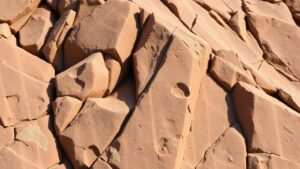Recovering Gold From Cemented Layers in Remote Washes
Recovering Gold From Cemented Layers in Remote Washes
The process of recovering gold from cemented layers in remote washes represents a critical aspect of artisanal mining and large-scale sedimentary gold prospecting. Remote washes, often characterized by their inaccessibility and unique geological formations, can harbor significant gold reserves. This article delves into the methodologies, challenges, and opportunities associated with gold recovery in such environments.
Understanding Cemented Layers
Cemented layers, or conglomerates, form when sedimentary particles are bound together by mineral precipitates or organic interactions, creating a solid matrix. This cementation process can significantly trap and preserve gold particles, making them difficult to extract. The understanding of these geological formations is crucial for developing effective recovery strategies.
Methods of Recovery
Several methods have been developed for recovering gold from cemented layers, each with its advantages and challenges. Below are some of the most utilized processes:
- Mechanical Crushing and Screening: This method involves breaking down the cemented layers using crushers, followed by sieving to separate finer gold particles. But, this approach can be labor-intensive and requires access to heavy machinery.
- Gravity Separation: Simple yet effective, this technique exploits the differences in density between gold and other materials. Methods such as panning, sluicing, or using a shaking table can be employed to concentrate the gold. A study by the World Gold Council highlighted that gravity separation can recover up to 90% of gold in high-grade ores.
- Chemical Leaching: When mechanical methods fail, chemical leaching using cyanide or mercury may be applied. While highly effective, these processes entail significant environmental and regulatory considerations. For example, the use of cyanide requires stringent safety protocols to prevent ecological disasters.
Challenges in Recovery
Recovering gold from cemented layers in remote areas is fraught with challenges. Geographic isolation often limits the availability of technology and resources necessary for efficient mining operations.
- Environmental Impact: The extraction processes can lead to soil degradation, water pollution, and loss of biodiversity. A case study in Ghana found that artisanal mining activities resulted in the contamination of local water sources, highlighting the need for sustainable practices.
- Economic Viability: The costs associated with machinery, labor, and transportation can outweigh the profits gained from gold recovery, especially in low-yield areas. The price of gold fluctuates based on market demand, affecting the viability of remote operations.
- Safety Concerns: Mining operations in remote locations often pose risks to workers, including accidents and exposure to toxic substances. Useing safety training and regulations is imperative to safeguard miners.
Real-World Applications
Successful case studies of gold recovery from cemented layers can serve as useful benchmarks for future operations. One notable example is the use of artisanal miners in the Amazon Basin, where dense vegetation and challenging terrain have not deterred their efforts. Their expertise in navigating these environments and employing local methods has led to successful recovery despite numerous challenges.
On a larger scale, companies such as B2Gold and Newmont Mining have invested in advanced technologies to assess and exploit cemented layers. Innovations such as remote sensing and geophysical surveys can help companies identify potential areas for gold recovery in challenging terrains.
Actionable Takeaways
For prospectors and companies looking to recover gold from cemented layers in remote washes, the following recommendations can enhance success:
- Conduct thorough geological surveys to identify the most promising sites.
- Use a combination of mechanical and chemical recovery methods to maximize yield.
- Use environmentally sustainable practices to minimize ecological impact.
- Invest in training and safety measures to protect workers and improve operational efficiency.
To wrap up, the recovery of gold from cemented layers in remote washes presents a challenging yet rewarding endeavor. By understanding the geology, employing appropriate recovery methods, and addressing the inherent challenges, prospectors can effectively capitalize on this opportunity while promoting sustainable mining practices.

